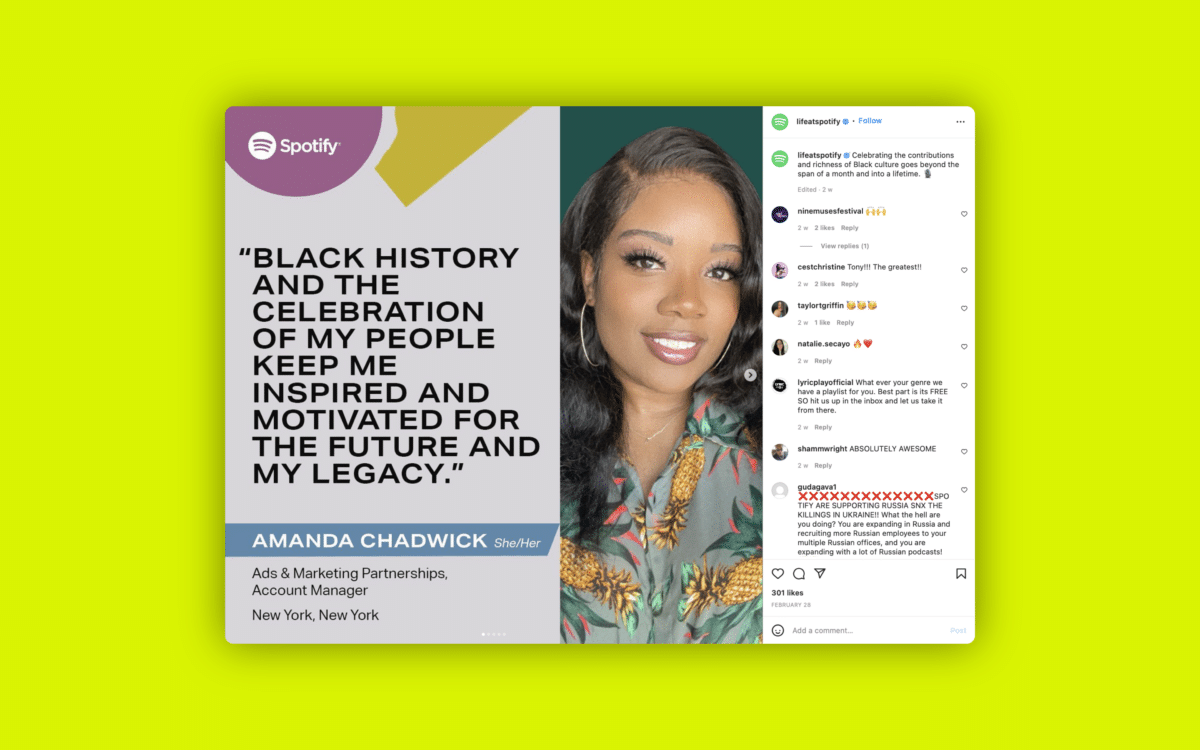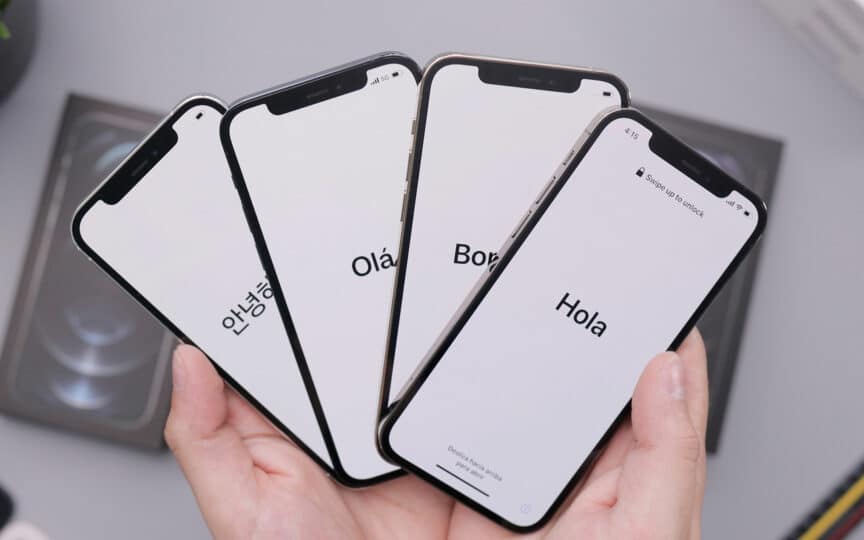Defining cultural branding: What is cultural branding?

What is cultural branding? You might have heard of “brand culture”, or “company culture”, but “cultural branding” is a slightly lesser-known concept. The concept essentially applies to infusing your company with a certain “lifestyle” you hope to give to customers and employees.
Ultimately, as any great branding company will tell you, the only way to ensure you succeed as a modern business, is to build meaningful relationships with your customers and staff.
People only want to buy from, and work for brands they trust and relate to. This is why it’s important to communicate more than just what you sell with your marketing campaigns.
Through cultural branding, you show your customers what you stand for, beyond selling products and services. It’s this in-depth insight into your company values which builds long-term loyalty and differentiates your organization.
Let’s explore the definition of cultural branding.
What is cultural branding? The basics
According to the Harvard Business Review, standing out in today’s digital world is increasingly complex in an age of social media, where customers are connected to endless companies all the time.
HBR notes that brands succeed most when they make “cultural” breakthroughs via relevant connections to their target audience.
Through cultural branding, brands promote an “ideology” or set of values which connects with its target audience and drives meaningful emotional connections.
Look at companies like “Under Armour” which originally rose to fame by building on existing successful branding ideologies from the Nike business.
Nike originally built its culture around telling stories of athletes and sporting legends capable of overcoming barriers due to willpower and passion. However, Nike started to abandon this concept in recent years, focusing more heavily on famous athletes and influencers.
This gave Under Armour a chance to jump in and produce more emotional ads.
Under Armour, like Nike, drew attention to under-served communities in the athletic space, like female athletes. This approach gave potential Under Armour customers something meaningful to get behind in their support of the brand.
Cultural branding is a kind of storytelling method, used not only to get customers connected with your company on a deeper level, but to build a better understanding of your brand’s purpose. Through your cultural branding efforts, you align yourself with a specific group of people and values.
This also helps with attracting potential customers and staff members who want to support your efforts.
Cultural branding definition: Who is it for?
While cultural branding is more common in B2C brands like Coca-Cola and Harley Davidson, it can apply to all kinds of businesses, including B2B innovators. At the heart of cultural branding is a commitment to building brand equity through meaningful, emotional stories.
Harley Davidson doesn’t just sell motorcycles; it welcomes customers into a community of acceptance and passion, where they can discover freedom and family in one space. The result is a sense of significant loyalty and commitment from Harley drivers.
Though they might be able to get similar bikes for a cheaper price elsewhere, they won’t compromise on the culture they get from Harley Davidson.
Crucially, cultural branding isn’t just something companies use to engage with potential buyers either – it can also be an essential part of attracting talent. If you’ve ever looked into the strategies used to improve hiring potential by major brands, you’ll know “company culture” is a significant factor.
Company culture builds on cultural branding in many ways, as they both focus on the same selection of values and ideologies. With both customers and talent, companies use “culture” to create a sense of belonging, commitment, and general investment.
For instance, look at Spotify. The company regularly makes itself stand out with cultural branding efforts targeted specifically at customers. Spotify allows consumers to see their “playlist” for the year at the end of each year, to learn more about their music habits, and help connect them with other listeners in their community.
Spotify also takes a range of other steps to improve cultural branding too. The company frequently showcases employees to help make its team members feel special, while demonstrating to customers what goes on behind the curtain of the brand.
Employee spotlights, team-centric content, and interviews are all excellent ways to show off the real people behind the company, while simultaneously making employees feel seen and valued.

Branding and culture: Cultural branding examples
There’s no one-size-fits-all when it comes to discovering the definition of cultural branding for your business. Rather, you need to look into the “soul” or “purpose” of your business to determine how to connect with your target audience. Unfortunately, many companies struggle with this process.
Great cultural branding efforts leverage the perfect combination of emotion, timing, and personality to recognize and reflect an ideology with a close connection to their customer’s heart.
Few companies have truly succeeded in this effort. While brands like Apple have managed to build their cultural branding around the concept of making technology simple, unique, and fashionable.
Apple was a success because its culture built around the idea computers didn’t have to be complex. It was the ideal way to attract customers at a time when there were fewer options available for technology.
Of course, not every company can be Apple, but we can all follow a few basic principles to build culture, such as:
1. Recognize a disruption in society
The best cultural brands are founded on a dedication to disrupt and innovate. Ben and Jerry’s, originally founded in the late 1970s, launched its product line in a market jam-packed with other ice cream brands.
The company thrived in the 80s by positioning itself as an antidote to the Reagan era where strong lines between conservatives and liberals were emerging.
Ben and Jerry’s knew it needed to be more than just an ice cream company to make an impact. This meant connecting with the ideas of harmony, love, and peace customers really needed back in the 80s.
For cultural branding too be effective, you need to not just disrupt the market, but do so in a way your customers see as “positive”.
2. Create your tribe
Community and connections are huge parts of developing a successful brand in any industry. Cultural branding, takes this to the next level. If you want to reach the status of “iconic cultural brand”, you need to develop a sense of community for your customers.
This could mean participating in new cultural movements where you engage your followers.
One excellent example of great tribal branding within the cultural marketing landscape comes from Subaru. The company has always focused on building identity among customers who love outdoorsy experiences, safety, and ecological friendliness.
In a similar way, your company can highlight specific values which make you more attractive to a certain selection of buyers and potential employees.
3. Design meaningful experiences
Experience has emerged as perhaps the most important differentiator in any landscape today. Cultural brands don’t just sell a product or service, they offer an experience, carefully customized to suit their customer’s needs.
Look at Apple. You don’t just get a phone; you get a comprehensive operating system unique to the company.
You’ll also have access to the “Genius” professionals in the Apple Store, to give you the support you need to make your purchase as powerful and beneficial as possible. There are similar examples all over the world.
Starbucks creates relaxing and comfortable environments where both business professionals and regular consumers can thrive.

4. Offer amazing services and products
This should probably be a no-brainer, but it’s definitely worth thinking about if you want to create a truly meaningful and successful cultural branding experience.
Although your experiences, personality, and engagement strategies will all make an impact to your brand’s success, you still need a great product or service to ensure you come out on top.
Harley Davidson gives its consumers a beautiful community experience no matter where they are in the world. However, the company is also well-known for offering speedy, powerful, and effective driving experiences for their audience.
Whenever the company’s design strategy has suffered, the brand overall has struggled too.
5. Stay consistent
A great cultural branding experience isn’t something you can simply adapt and evolve with the changes in marketing trends. You need to be ready to stand by your specific values and personality over time.
Good cultural branding, like most branding strategies, is consistent. Ultimately, you need to build your entire business around a central “essence” and “story” which stays the same.
Target is a company committed to giving a portion of profits back to local communities, to help entire cities and towns thrive. In turn, customers feel they’re not just getting affordable products, they’re also making a positive difference to the way their community works.
The brand has become a mechanism for positive social change. If the company suddenly stopped giving back to the community, but kept its prices low, it wouldn’t have the same impact.
Steps for implementing culture and branding
The brands we recognize as experts in cultural branding today have succeeded in their fields because of their commitment to building genuine relationships with their audience. These companies have embraced meaningful concepts at their heart of their organizations.
Using these values as a compass to success, these organizations have developed meaningful positions in the world.
For emerging companies to take advantage of cultural branding, they need to start by understanding their audience and what matters most to them. Cultural branding unlocks a critical humanizing element for your brand’s overall story.
This is critical for both B2B and B2C companies. The question is, where do you get started?
The following steps will help you make your cultural branding a success.
Step 1: Be authentic
There’s more to successful cultural branding than simply telling the right story. To connect with customers on a cultural level and build an avid following, you need to develop a sense of credibility and trust with your audience.
This begins with projecting true authenticity. Being true to yourself as a business is a critical part of brand storytelling. Remember, prospective customers can find fakes from a mile off, which can erode trust and cause problems for your brand.
From day one, decide what you’re going to hold as “crucial” to your company. If you think you’re going to build a culture around saving the environment, make this a consideration in everything you do.
Look at your entire business, from the supply chain, through to the way you serve your customers. Are there any aspects of running your company you can innovate to make them more environmentally friendly?
Once you’ve ensured you’re following your own guidelines for “what’s important” in your business, be transparent in showing off to your customers. Highlight your unique supply chain and what makes it so environmentally friendly.
Pay attention to the materials you’re using, or how much you’re recycling each month. You could even put your team members under the microscope, asking them to share their thoughts about how your business is innovating.
Step 2: Create personal connections
Creating a personal connection with each individual customer in your community might seem difficult, particularly as your business begins to grow. However, if you want to be an expert at cultural branding, you need to at least attempt to make these personal connections.
Cultures rely on people, working together towards shared goals and values. The customer personas you build will give you an insight into the kind of people you’re trying to reach and move with your brand story.
Once you have these guidelines, think about how you can showcase your human side to make real connections more significant.
One option could be to start by actually talking to your target audience. Reach out to your customers and ask for reviews and testimonials. Run polls and surveys to generate as many insights from your audience as possible.
You can even look into using social listening tools to see what your audience is talking about on a regular basis. Aside from listening to your customers, remember it’s always worth listening to your employees too.
Honest, real dialogue with the people you claim to serve makes you look more authentic, empathetic and caring as a business leader.
Step 3: Get employees involved
You can’t have a powerful cultural branding strategy without a dedicated team of employees. Your team members connect with your customers, community, and the wider cultural environment on a daily basis. Their perspectives and insights could be the key to growing your business.
With this in mind, make sure you enable an open line of communication with your team.
Work with your staff on coming up with new ideas to make your visions a reality. Ask for their opinions about your company’s values, and where you need to work harder.
You can even improve the connection between your customers and individual employees, by allowing your staff to interact in a more human way with customers through social media and other channels.
Pulling back the curtain on your business and sharing pictures or videos of your teams in action or allowing staff to share their own stories can be a great way to authenticate your business.
Getting employees involved on this level will even help to improve your “honest” image with your target audience.
Step 4: Put customer experiences first
Ultimately, a great cultural branding experience is all about building a community based on experience, shared values, and compassion.
Aside from being honest in your communications with customers and working hard to show you care about the same things as them, you should also be doing everything you can to deliver amazing experiences.
Think about how you can get your customers involved with their purchasing experience.
For instance, can they help you choose your next product, so they feel like they’re helping to grow your company and improve the overall community? Can you deliver more personalised experiences based on what you know about each segment of your target audience?
Collecting information about your target audience through surveys, polls, and even the analytical tools built into your website and social media applications should help.
The more data you gather, the more you’ll be able to discover about your customer’s journey, and the steps you can take to make it as streamlined as possible.
Step 5: Be “human-first”
Notably, while many of the best companies demonstrating “cultural branding” have a strong focus on customer experience, they’re also heavily committed to more than just their buyers.
Companies with great culture think beyond the basics of sales and marketing to look at their impact on humanity on a wider level.
Think about your customers but go beyond this and look at things like the community your business serves, and the impact you have on the planet. Consider your employees and ask yourself what you can do to make their lives better too.
Can you provide your staff members with more flexibility in their choice of where and when they want to work, provided they give you the right results?
Cultural branding should be about more than just attracting customers. Your business culture needs to reflect an important set of values which apply to everyone.
Profile your people, customers, partners, and everyone else you might interact with to determine how you can be as “human focused” as possible. Keep re-evaluating and building on your efforts whenever possible too.

Discovering the benefits of cultural branding
Cultural branding can seem complicated. There’s more to it than simply telling a story or telling your customers you’re invested in a certain set of values.
A good example of cultural branding needs to be built on disruption, authenticity, and community. You need to understand what matters to your audience and potential employees, but also be honest about the real passions of your company.
Cultural branding needs to come from a place of true commitment and genuine empathy. You need to be committed to making a real change in your community or industry, through not just the use of new products and services, but a dedication to your landscape too.
If you can do it correctly, cultural branding can significantly improve your chances of standing out in a cluttered marketplace and prevent you from simply “blending into the background”.
Just remember, true cultural branding starts with genuine understanding, authenticity, and personal connections.
Fabrik: A branding agency for our times.

We’ve built our reputation, building brands for other people.
Do you need to bring a new brand to life or breathe new life into an existing one? If so, let’s start a conversation











